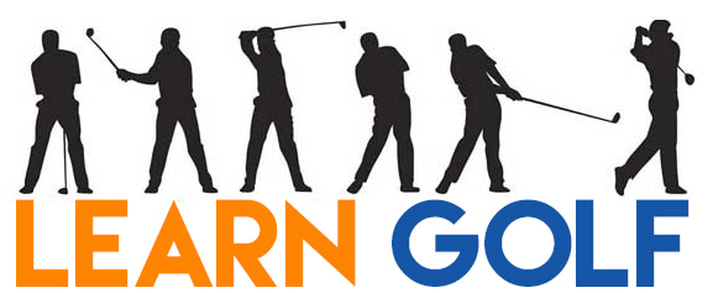Learning golf can be an overwhelming experience. Not only are you trying to develop a consistent and solid swing, but you are also swamped with rules, etiquette and lots of questions. This page is designed to try and help beginners with answering some of those questions. If there are any areas you would like covering, or points you think should be added to benefit other beginners - then let us know by CLICKING HERE
1. Golf Terminology
|
Golf is full of strange words and phrases. Some of which you may be wondering 'What are they talking about?" If you are would like to know more about some of this universal golf language then CLICK HERE |
2. Rules of Golf
|
Golf is game that is built upon integrity and honesty and for the most part is self governed. As such, there are lots of rules with regards to how you should not only play the game, but conduct yourself.
If you want to know more about the rules of Golf from England's governing body "Royal & Ancient" also known as The R&A - CLICK HERE |
3. Golf Etiquette
There are a number of etiquette rules that you can fall foul of on the golf course: To read about etiquette in golf CLICK HERE
Some common etiquette rules are;
Some common etiquette rules are;
- Not repairing your pitch marks. When the ball lands on the green, it can sometimes leave an in indent in the green which will cause problems for other players who are trying to putt. If you don’t repair it properly, you can destroy the root of the grass. Watch this video to learn how to repair your pitch marks. Also fix your divots and rake sand traps.
- Not keeping up with the pace of play. Be ready to take your shot when it’s your turn.
- Talking while people are taking their shot. Or talking loud enough that people putting or teeing off on other holes can hear you. Just be considerate.
- Not picking up your tees. If it’s not broken, you can reuse it. If it is broken, just bin it.
- Hitting your ball near other people. If they could be in range, just wait. If you accidentally hit it near them, yell “Fore!” or something to warn them.
- Not letting people play through. If your group is slower and the group behind you has to wait a lot for you to finish, let them play the next hole first.
- Do not put your bag or trolley on a green. Greens are super sensitive and very expensive to repair so don’t risk damaging them.
- Standing very close to the cup. The ground around the cup is not going to be very strong so if you stand near very close to the lip of the cup, you risk damaging it.
- Walking or casting a shadow on people’s putting lines. Putting is hard enough as it is without other players distracting you.
- Standing too close to a player swinging his club.
4. Equipment & Clothing
Buying your first set of clubs can be a tricky decision. How much? What clubs? What brands? But also, people often feel like they need to buy better and more expensive clubs so that they don't look like a novice on the driving range/course. The best advice is to buy a set that are within your budget and are based on a realistic assessment of your ability at that stage.
If you are learning the basics of the game then ANY clubs that you feel confident with are the right clubs. Once you develop sound fundamentals and a good foundation, then the best advice is to be professionally fitted for clubs, so that you get the best out of your ability. There is a common misconception that 'custom fitting' is expensive. However, in reality, the cost of doing this is refunded against the price of the clubs in most cases.
My recommendation would be to book a custom fitting at Clarkes Golf Centre in Rainford.
Here are other items you will need to consider when taking up golf:
If you are learning the basics of the game then ANY clubs that you feel confident with are the right clubs. Once you develop sound fundamentals and a good foundation, then the best advice is to be professionally fitted for clubs, so that you get the best out of your ability. There is a common misconception that 'custom fitting' is expensive. However, in reality, the cost of doing this is refunded against the price of the clubs in most cases.
My recommendation would be to book a custom fitting at Clarkes Golf Centre in Rainford.
Here are other items you will need to consider when taking up golf:
- Golf bag. Do you want to carry a bag, or push/pull one on a trolley. Its a personal decision and costs as much or as little as you are willing to spend.
- Golf balls. For a brand new player you should look at quantity over quality as you may loose a few.
- Tees. A multi pack of tees gives you a range of sizes to try to suit.
- Divot Repair Tool. You’ll occasionally need this to repair greens when your ball makes a divot upon landing.
- Ball marker. You can use a coin, but at least have something small and flat to mark where your ball is on the green.
- Golf Towel: To wipe your clubs and golf ball clean.
- Golf shoes. They are a personal choice based on comfort and feel. There are plastic spike shoes and moulded sole [spike less] shoes. You can't really find metal spiked golf shoes these days as they aren't allowed on lots of courses.
- Golf glove: Right handed golfers usually only wear a glove on their left hand, and its vice versa for left handed golfers. Try gloves on for feel and fit as you want a glove that is tight and like a second skin and not baggy on your hand.
5. Set Realistic Goals
Golf is not a game of perfect. You are always battling against the course and against yourself. One week you may be hitting the ball beautifully and the next you may be struggling to hit it at all. You may fix one problem and it breeds a fresh problem elsewhere, but thats golf.
You need to appreciate that results are not instant and to reach goals will require an amount of work and dedication on your behalf.
Most people who pick up clubs for the first time will be hitting 8-10+ shots on holes, loosing balls, topping the ball, slicing and hooking and generally fighting their way around the golf course. But this applies for everyone when they first start. Its not as simple an answer as 'the game is tough', it's due to a number of elements and misunderstandings about golf swings and how you hit a ball further and straighter. The only way 99% of people come to appreciate this is through lessons and getting advice and 'drills' to help develop a sound golf swing.
Unless you are committing several hours a week to practice, then development will be at a steady rate as opposed to explosive and your goals should be set in your lessons so they are realistic and achievable.
You need to appreciate that results are not instant and to reach goals will require an amount of work and dedication on your behalf.
Most people who pick up clubs for the first time will be hitting 8-10+ shots on holes, loosing balls, topping the ball, slicing and hooking and generally fighting their way around the golf course. But this applies for everyone when they first start. Its not as simple an answer as 'the game is tough', it's due to a number of elements and misunderstandings about golf swings and how you hit a ball further and straighter. The only way 99% of people come to appreciate this is through lessons and getting advice and 'drills' to help develop a sound golf swing.
Unless you are committing several hours a week to practice, then development will be at a steady rate as opposed to explosive and your goals should be set in your lessons so they are realistic and achievable.




